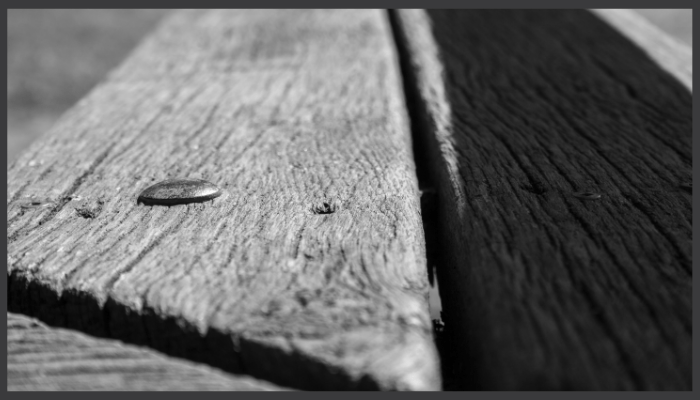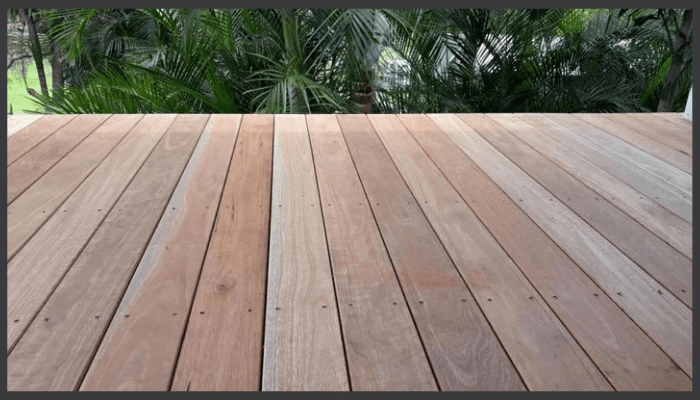Why Your Spotted Gum Deck Cupped After Being Covered (and How to Fix It)
Table of Content:
- Why Your Deck Warped After Being Covered
- Understanding Why Decking Boards Cup After Being Covered
- Common Causes of Spotted Gum Deck Cupping
- How to Fix Cupped Spotted Gum Decking After Being Covered
- Preventing Future Deck Cupping in Nsw Conditions
- Conclusion
- Frequently Asked Questions
Why Your Deck Warped After Being Covered (and How to Fix Cupped Spotted Gum Decking)
How to fix cupped spotted gum decking after being covered is a question that comes up all the time, because spotted gum decking costs a fortune and everyone raves about the colour, toughness, and termite-resistant nature of this Australian hardwood.
Then you cover it with a roof or pergola and suddenly the boards go wonky. Happens all the time actually.
We're talking about how to fix cupped spotted gum decking after being covered here. Why it happens, what you can do about it, stopping it happening again.
Fixed properly, your deck won't give you grief through NSW weather conditions. Done wrong and you'll be back at square one.
Understanding Why Decking Boards Cup After Being Covered

The Science Behind Timber Cupping
Timber sucks up water from the air. Always has. One face gets more moisture than the other, that side swells up. The board curves. That's cupping.
Spotted gum’s a dense, proper Australian hardwood. Softer species like Merbau react differently when exposed to moisture, which makes the Spotted Gum vs Merbau comparison worth noting for anyone dealing with deck cupping.
Once moisture gets in one side, takes forever to sort itself out. The density that makes it tough also makes it stubborn.
How Covering Your Deck Changes Moisture and Ventilation
Cover your deck, no more rain hitting it. Sounds good right? Problem is, you've blocked sun and airflow too.
Air can't move under there, the underside stays wet while the surface dries out. Different moisture levels, boards warp.
NSW gets humid summers, cold winters. Makes everything worse. Deck close to the ground? Leaves and rubbish blocking ventilation? You're asking for trouble.
Recognising Early Signs of Cupping
Here's what to watch for:
-
Edges lifting up, surface goes uneven
-
Splits starting to show, grain looks weird
-
Gaps between existing boards changing size
-
Rain water sitting in puddles instead of running off
Catch it early, you can save the timber. Leave it too long and those decking boards are cactus.
Common Causes of Spotted Gum Deck Cupping

Poor Airflow and Moisture Under the Deck
Sub deck space stays wet. That's your problem right there. The underside of boards soaks it up, top stays dry.
Different moisture levels mean warped timber decking. A minimum clearance of 400mm under the deck is essential water needs somewhere to go.
Incorrect Board Spacing and Installation
Boards too tight together and they've got nowhere to expand. Water can't run off, air can't move through. They swell, they warp.
90mm boards don't cup as bad as the wider ones. Check what the manufacturer says about board spacing and ventilation but honestly most people don't and then wonder why their deck's gone to hell.
Sealing and Oiling Mistakes
Only oiling the top? The underside's going to absorb every bit of moisture it can find. All four sides need coating. Ends, edges, everything. Otherwise you're wasting your time.
Get penetrating decking oil. The stuff that actually soaks in, not just sits on the surface.
How to Fix Cupped Spotted Gum Decking After Being Covered

Step 1: Inspect and Assess the Damage
Which boards are stuffed? Rot, splits, soft spots. Minor cupping you might save. Bad ones need replacing boards, no point pretending otherwise.
Step 2: Rebalance the Moisture
Pull the warped ones out if you can. Stack them with spacers, cupped side down. Few days drying time usually. Top too dry? Bit of water misted on. Don't blast them with heat or leave them baking, you'll just crack them worse.
Step 3: Sand, Plane or Replace Boards
Boards dried out and stable? Sand the high spots. Or plane them if you've got one. Deep cupping though, just replace them. Same timber species, same width, or it'll look stupid.
Step 4: Reseal and Protect the Deck
Level boards get fresh oil. Every surface and the end grain especially. That's what stops moisture getting in and starting this whole mess again.
Once a year, sweep off the dirt with a broom, recoat. Not hard but people skip it then complain when their spotted gum deck goes bad.
Preventing Future Deck Cupping in Nsw Conditions

Maintain Proper Ventilation and Drainage
Sub deck needs airflow. Don't seal up the whole perimeter. Cross ventilation from different sides works. Deck near damp ground? Vents or vapour barrier might help.
Ensure Correct Spacing and Ground Preparation
3mm to 6mm gap between boards depending on width. Ground stays dry with gravel or weed mat underneath. Joists touching soil is asking for rot.
Regular Maintenance and Protection
Clean gaps between decking boards and reapply oil once a year to maintain and seal spotted gum decking. That’s how you prevent rot, balance moisture, and keep your deck looking sharp.
Conclusion
Underside wetter than the surface causes cupping. Fix it by balancing moisture, sand it flat, reseal everything, sort the ventilation.
Basic maintenance stops your spotted gum deck turning to rubbish when you actually need it — and reminds you why spotted gum is a superior choice for Australian decks that last.
Frequently Asked Questions
Why Did My Spotted Gum Deck Cup After Being Covered?
No ventilation underneath. More moisture one side than the other.
Can I fix cupped decking without replacing it?
Minor cupping, yes. Dry it, sand it, oil it once moisture evens out.
Do I Need to Coat All Sides of the Boards?
Absolutely. Seal all four sides and ends to maintain even moisture absorption.
What's the ideal gap between decking boards?
3 to 6mm spacing lets water drain and air move.
How Often Should I Re Oil My Deck?
Yearly. More if it cops heavy weather conditions or lots of use.
Can covered decks still need ventilation?
Covered or not, needs airflow underneath or it'll rot.
When Should I Replace My Deck Boards?
Cracked, soft, or how to fix cupped spotted gum decking after being covered is no longer an option if the boards are cupped beyond what sanding can fix.
